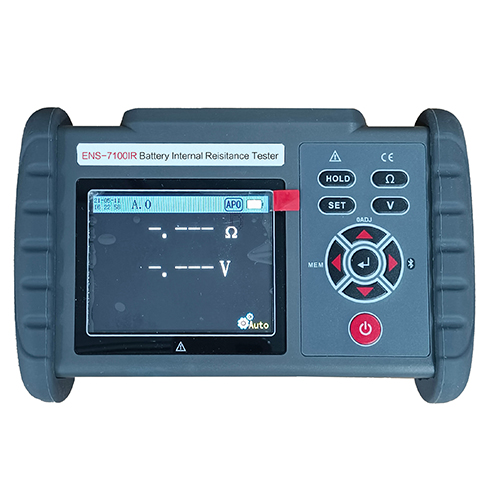The battery impedance tester is an instrument used to measure the internal impedance of the battery and the degree of damage to the acidified film of the battery. Through online testing, the instrument can display and record important parameters such as voltage, internal resistance, and capacity of a single cell or multiple groups of batteries, accurately and effectively pick out outdated batteries, and can generate test reports with computers and special battery data management software to track Battery decay trends and provides maintenance recommendations. It is suitable for the maintenance and inspection of batteries in communication base stations, substations and UPS. Used for battery acceptance, battery matching and routine inspection.

How to use the battery impedance tester?
Choose the appropriate test frame according to the different types of batteries to be tested (according to customer requirements, we provide different Battery Discharge Testers), and only introduce one of the general Battery Discharge Tester operation methods.
1. First place the instrument and test frame on a horizontal workbench.
2. Insert the terminal block of the test frame into the socket on the panel of the instrument, and tighten the screws.
3. Insert the power cord of the battery impedance tester instrument into a 200V/50Hz power outlet.
4. First loosen the fixing screws at the bottom of the sliding plate, then adjust the position of the sliding plate according to the length of the battery to be tested so that the distance between the four test pins is about 4mm less than the length of the battery, and then tighten the fixing screws of the sliding plate.
5. Put the positive pole and the negative pole of the battery into the positive test pin and the negative test pin respectively, so that the center of the battery is consistent with the center of the test pin, and the positive and negative poles of the battery and the test pin are in contact with each other.
6. Turn on the power switch of the instrument, the display reading will jump several times, which is a normal phenomenon, and the reading will automatically stabilize after about 100mS.
7. Press the switch button according to the measured battery internal resistance to select the appropriate range (if the range is too large or too small, the reading will be inaccurate). Note down its exact reading.
8. After the test, remove the battery according to the opposite direction of the battery loading.
So far, the practical method of judging the health status of the battery can be tested by using the Battery Discharge Tester produced by E-Nanny. We suggest that when the internal resistance of the battery increases by more than 20%, it should be considered to correct or replace the unit cell measure.
 English
English
 Español
Español
 Português
Português
 русский
русский
 français
français
 日本語
日本語
 Deutsch
Deutsch
 Tiếng Việt
Tiếng Việt
 Italiano
Italiano
 Nederlands
Nederlands
 Pilipino
Pilipino
 Türk
Türk
 Gaeilge
Gaeilge
 عربى
عربى
 Indonesia
Indonesia
 norsk
norsk
 čeština
čeština
 Ελληνικά
Ελληνικά
 فارسی
فارسی
 தமிழ்
தமிழ்
 Српски
Српски
 Català
Català
 עִברִית
עִברִית
 Galego
Galego
 Беларус
Беларус
 Hrvatski
Hrvatski
 ជនជាតិខ្មែរ
ជនជាតិខ្មែរ
 Кыргыз тили
Кыргыз тили
 O'zbek
O'zbek
 Lëtzebuergesch
Lëtzebuergesch
 ไทย
ไทย
 Polski
Polski
 한국어
한국어
 Svenska
Svenska
 magyar
magyar
 Malay
Malay
 বাংলা
বাংলা
 Dansk
Dansk
 Suomi
Suomi
 हिन्दी
हिन्दी
 български
български
 ລາວ
ລາວ
 Latine
Latine
 Қазақ
Қазақ
 Euskal
Euskal
 Македонски
Македонски
 Lietuvos
Lietuvos
 Eesti Keel
Eesti Keel
 Română
Română
 मराठी
मराठी




